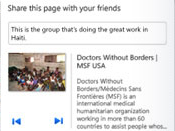Abstract
Instant Messaging (IM) is becoming an increasingly popular channel of synchronous internet communication especially among teenagers (Huang, 2008; Berglund, 2009; Crystal, 2006, p.248). The manifestations of IM clients such as ICQ, MSN, Facebook chat, has given rise to a unique structure of language communication in the internet community -Computer-mediated communication (CMC) (Crystal, 2006). It is of interest to see how participants of a conversation can understand each other, considering that electronic chat discussions are so unintelligible and different from face-to-face communication (Holmer, 2008). This paper examines the distinctive textual features in CMC texts that are extracted from Windows Live Messenger (WLM). Based on an approximately 800-word corpus of instant messages, collected from an undergraduate student whose first language is Cantonese and second language is English, this study investigates three most prevalent textual features in synchronous CMC texts and justifies their existence in accordance to the Hong Kong context.
TABLE OF CONTENTS
Page.No
INTRODUCTION
DATA COLLECTION
RESULTS & ANALYSIS
SHORTENINGS
3.11 Phonological Shortenings
3.12 Lexical Shortenings
3.13 Syntactic Shortenings
TRANSLITERATIONS
3.21 Romanized Cantonese Sentence Particles
3.22 Romanized Cantonese Expressions
3.3 EMOTICONS
4 CONCLUSIONS
5 REFERENCES
1. INTRODUCTION
Prior to the 96s, language communication was a laborious and deliberate process, considering one's options to communicate long distances were limited to telephones, letters and emails. With the introduction of online bulletins and discussion boards in the mid nineties, many computer technology corporations then recognized the importance of online discussion. Hence, Microsoft, for instance created an instant messenger client named Windows Live messenger (WLM). This client enables electronic communication to take place in real time between two or more users. Each WLM user has his or her personal contact list that stores all the chat partners that he or she has authorized akin to other instant messaging software. (Lee, 2002, p.4; Danet...


